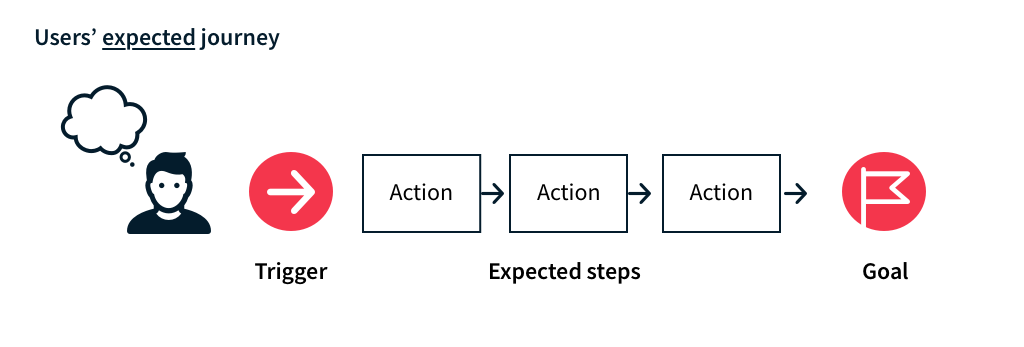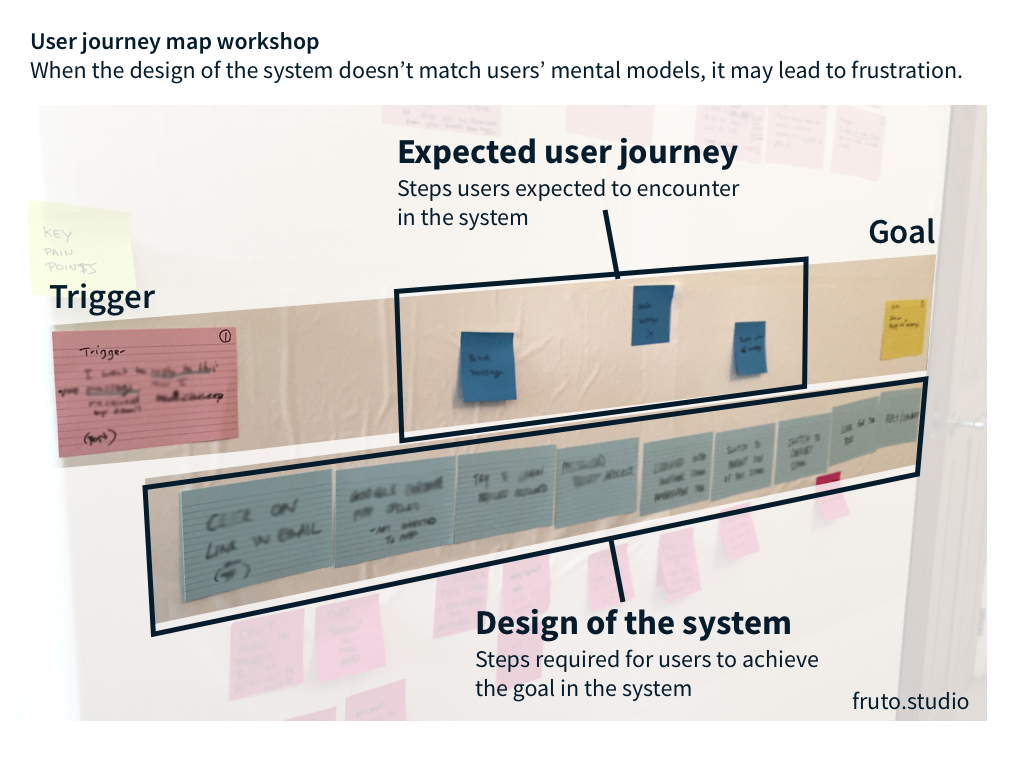Whichever way you look at it, User Experience (UX) has a direct impact on your business. By improving customers’ experience of your product, you improve conversion rates. By increasing customer satisfaction, you keep them coming back for more. Not only that, but strong UX gives you a solid USP, improving your value proposition and innovation. If you’re concerned that the UX of your product could be better, here’s a way to improve it.
Step 1: Understand the problem
Solving the right problem is cheaper than solving the wrong one, so don’t rely on guesswork. Before you can address UX problems, you need to start by identifying the key pain points for your users. This requires a mix of quantitative and qualitative research.
Quantitative research
This shows you what is happening. For example, x% of users are dropping out at page y; x number of users are inactive. Google Analytics funnels are a handy tool for working out what’s happening on your site, while Hotjar gathers videos of individual users’ screens as they interact with your site. Card-sorting is a useful exercise for improving your information architecture, helping you find problems with your site navigation and understand how it could be more intuitively structured.
Qualitative research
This gives you insights into why the problem is happening. For example, users could be dropping out during your sign-up process because they’re unsure about the benefits of your product in comparison to the service they currently use, or because they’re confused by a question on the form. What’s more, it might be that although it looks as though users are dropping out, they may in fact be continuing on a different device to complete a transaction.
There are a number of ways of gathering these more in-depth insights.
User interviews — these one-to-one sessions with representatives of your user groups help you understand the perceived value of your product/service/business/process to the user, telling you why they use your product, their expectations and mental models, needs, what makes them access your website, what tasks they’re trying to achieve, what works and what doesn’t work well in your product. Interviews can also help you understand how users are currently completing tasks before you launch a new product.
Usability testing — like user interviews, these are one-to-one sessions that help you identify usability issues with your website by observing users interact with it while thinking aloud. This tells you how easy or difficult it is for real people to complete tasks on your site, helping you identify any elements that cause problems.
There are, of course, many more techniques; these are just for starters.
Step 2: Map out a user journey
Having carried out this research, you’ll be able to identify personas and map out user journeys working from an evidenced-based list of problems. You’ll probably notice that your system doesn’t always match how users expect it to work. By mapping out users’ mental models and journeys, you can clearly visualise any problems.


Step 3: Prioritise the UX problems found
There are many ways of doing this, but one way is to map problems against user journeys and order them by how critical those problems are for user experience (and therefore your business). The highest priorities would be problems that stop or delay users achieving their goals, such as completing a transaction, or problems that affect a large number of users.

Step 4: Make iterative improvements and test with users
Each time you make an improvement to your UX, back it up with usability testing.

The System Usability Scale is also a good way to measure usability, giving you a benchmark against which to monitor improvements, and providing evidence to senior management and investors. Another useful tool is the Net Promoter Score, which measures loyalty between a provider and consumer by asking them how likely they are to recommend you.
You don’t have to do this all yourself, of course. We’d love to help you improve the UX/UI of your product, site or app, or run a UX design training course to teach your team how it’s done. We’re used to doing this for clients, so take a look at our case studies to find out more about our approach.
Get in touch if you’d like to discuss how to upgrade your UX.


